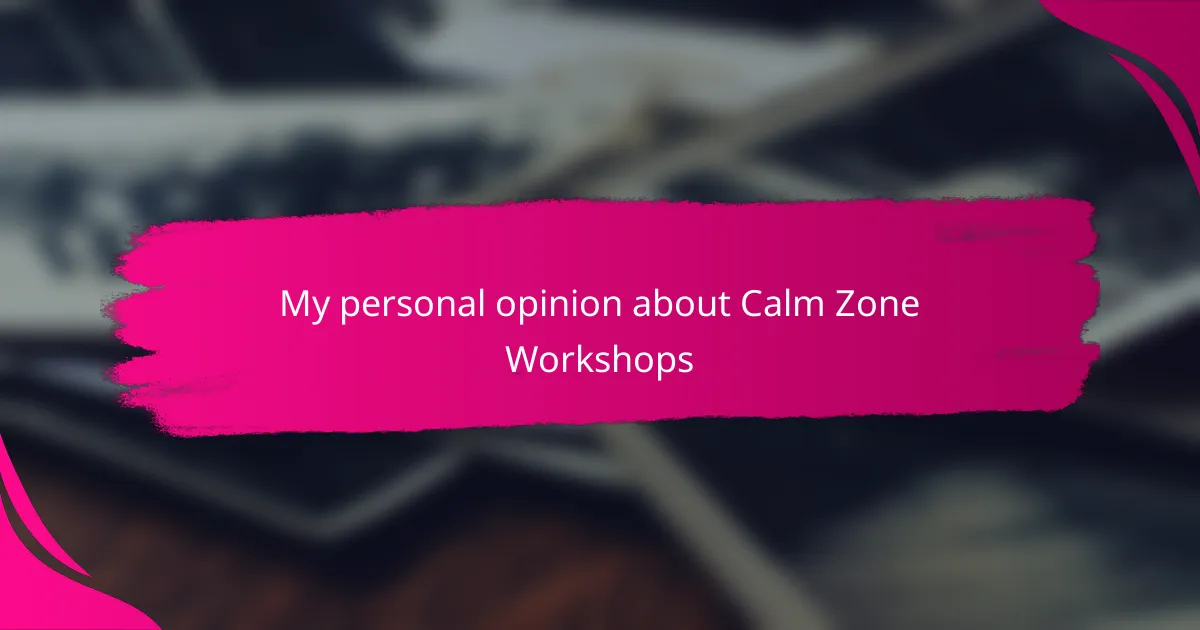Key takeaways
- Calm Zone Workshops provide children with safe spaces to learn emotional regulation and self-awareness through techniques like mindful breathing and sensory grounding.
- Parents benefit from these workshops by enhancing their patience and understanding of emotional cues, fostering stronger connections with their children.
- Implementing lessons from the workshops, such as creating a dedicated calm zone at home, encourages regular practice and reinforces emotional management skills.
- Emphasizing the importance of patience, parents are reminded that emotional growth takes time, and small, incremental changes can lead to significant progress.
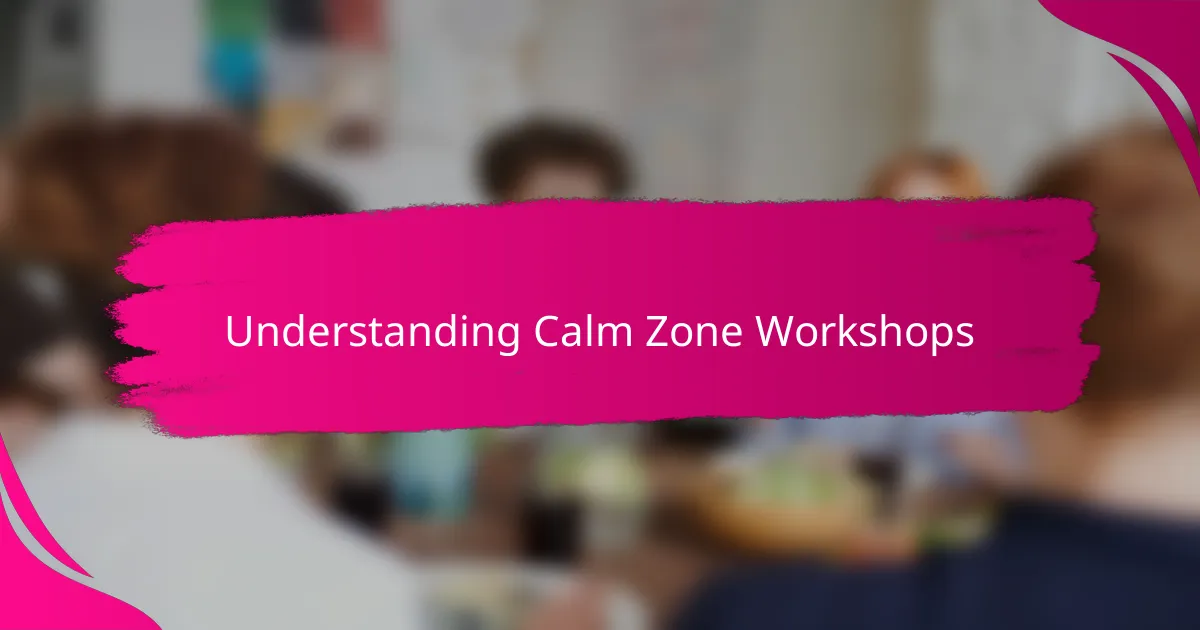
Understanding Calm Zone Workshops
Calm Zone Workshops are designed as safe spaces where children can pause, breathe, and regain emotional balance. From my experience, these sessions don’t just teach calming techniques—they create a sanctuary where kids feel truly understood and supported.
I remember attending one workshop with my child and noticing how simple tools like deep breathing and gentle movement made a profound difference. Isn’t it amazing how something so straightforward can help kids navigate overwhelming feelings more confidently? It really opened my eyes to the power of intentional calm.
What strikes me most about these workshops is their focus on building self-awareness and emotional regulation in a gentle, approachable way. Have you ever wondered how a child who struggles with big feelings might change when they learn to center themselves? That’s exactly what Calm Zone Workshops aim to cultivate.
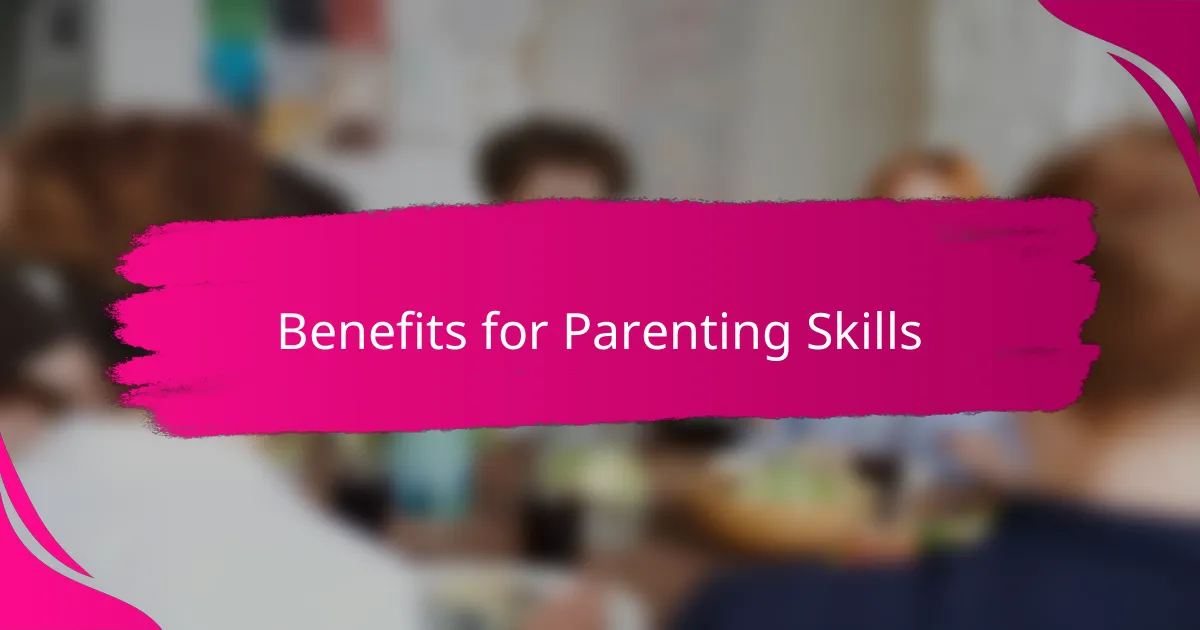
Benefits for Parenting Skills
One of the biggest benefits I’ve noticed for parenting skills is how these workshops teach patience and presence. When you see your child practicing calm strategies, it naturally encourages you to slow down and respond more thoughtfully rather than react impulsively. Have you ever caught yourself getting frustrated before realizing your child just needed a moment to reset? That shift in mindset has made a huge difference for me.
Another thing I appreciate is how Calm Zone Workshops help parents understand emotional cues better. By witnessing their child’s journey toward self-regulation, parents get clearer insights into what triggers their little one and how to support them effectively. It feels like having a new language to communicate feelings, which really strengthens the connection between parent and child.
Lastly, these workshops empower parents with practical tools to model calm behavior themselves. I found that when I practiced the breathing techniques alongside my child, it not only grounded me but also showed my child that managing emotions is a shared skill. Isn’t it powerful to realize that you’re not just teaching your child—you’re growing together?
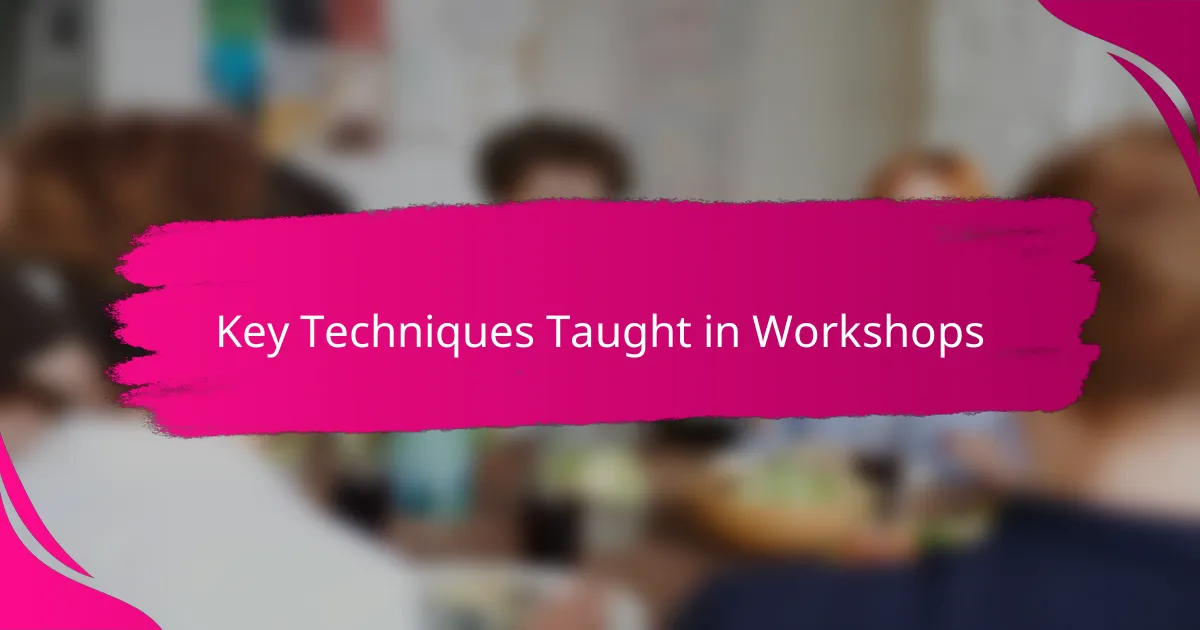
Key Techniques Taught in Workshops
One technique that really stood out to me was the emphasis on mindful breathing. In one session, my child learned to take slow, deliberate breaths when feeling overwhelmed. It was remarkable to see how just pausing for a few breaths could gently shift their mood—have you noticed how simple breathing can sometimes do wonders in calming your own nerves?
Another powerful method is the use of sensory grounding. The workshops introduce activities like focusing on textures or gentle movements, which helped my child stay present instead of getting lost in anxious thoughts. I found myself trying these techniques too, and it’s incredible how reconnecting with the senses brings a fresh sense of calm and stability.
Finally, I appreciated how the workshops teach children to name their emotions clearly. When my child started labeling feelings like frustration or sadness, it opened up honest conversations between us. Have you ever seen how just putting a name to an emotion can make it feel less scary and more manageable? That’s a skill I think every child—and parent—can benefit from.
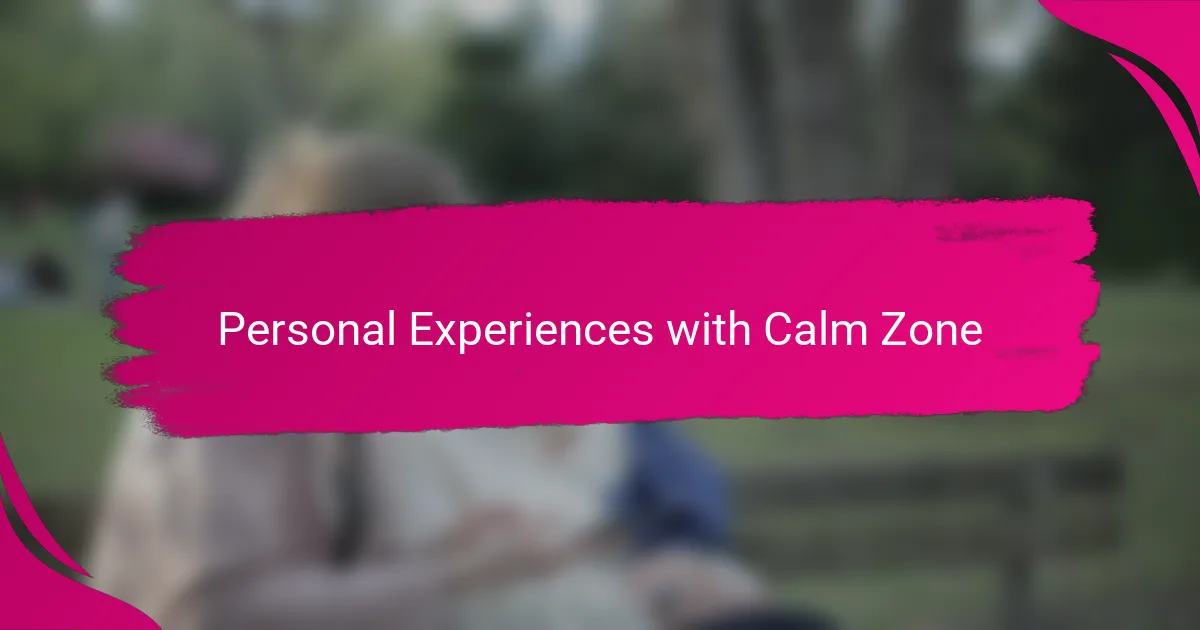
Personal Experiences with Calm Zone
At one Calm Zone workshop, I watched my child’s face soften as they moved through the calming exercises. It was a moment that made me realize how much children need permission to slow down and just be. Have you ever seen that peaceful pause in a child before? It’s truly a gift.
I also noticed how these workshops offered me a new perspective on my child’s emotional world. Instead of feeling overwhelmed by outbursts, I started to see them as opportunities for growth and connection. Isn’t it comforting to find ways to meet your child where they are rather than push too hard?
Sometimes, after a session, my child would share little insights about their feelings that surprised me. One time, they told me how the breathing helped when they felt “all mixed up inside”—a simple phrase but so revealing. It made me think about how often we underestimate a child’s ability to understand and express their emotions when given the right tools.
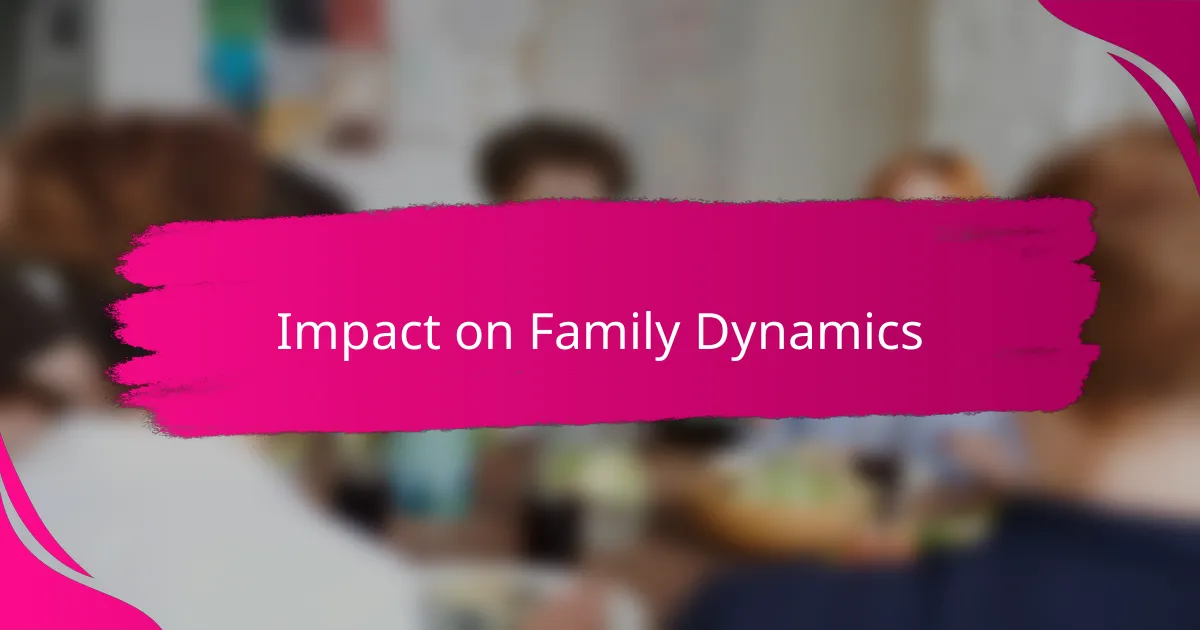
Impact on Family Dynamics
One of the most noticeable shifts I observed was how Calm Zone Workshops gently eased tension within our family. When my child started using calming techniques at home, arguments felt less frequent and more manageable. Have you ever experienced a moment where a small pause changed the whole energy in the room? That’s exactly what happened in our living room.
I also sensed a new rhythm developing in our daily interactions. With calmer responses from my child and a more patient approach from myself, it felt like we were tuning into each other more clearly. It made me wonder—how often do we miss these subtle shifts in family dynamics, simply because we haven’t learned to pause and listen deeply?
What struck me most was how these workshops fostered empathy all around. When my child could name their feelings better, it opened the door for us to connect rather than clash. Isn’t it incredible how understanding just one another’s emotions can transform the way a family relates? This experience truly reshaped the way I think about emotional connection at home.

Tips for Applying Workshop Lessons
One tip I found essential is to practice the calming techniques regularly, not just during moments of stress. When my child and I made deep breathing a daily habit, it became second nature for them to reach for that calm space when emotions ran high. Have you noticed how consistent practice can turn a new skill into a reliable tool?
I also recommend creating a dedicated calm zone at home, similar to the workshop setting. We set up a small corner with soft pillows and sensory toys, and it quickly became my child’s go-to spot for self-soothing. It’s incredible how a physical space reinforces the mental habit of pausing and resetting.
Finally, patience is key when applying these lessons. There were times I wished for immediate results, but I learned that emotional growth takes time. When my child stumbled, gently reminding them of the workshop tools helped build confidence rather than frustration. Have you found that steady encouragement often leads to the most lasting changes?
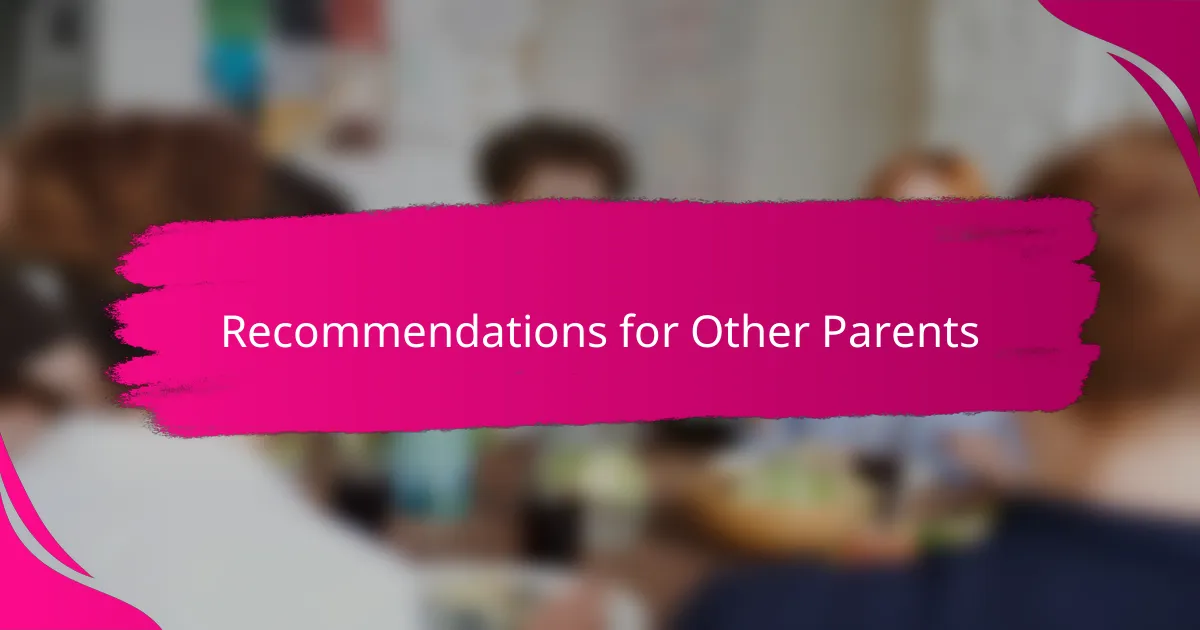
Recommendations for Other Parents
If I were advising fellow parents about Calm Zone Workshops, I’d stress the importance of embracing the process with an open heart. When my child first started practicing the techniques, the changes were subtle, but over time, those small moments of calm added up. Have you ever felt like real progress happens in those quiet, almost invisible steps?
I also encourage parents to attend these workshops together with their children. It’s not just about teaching the kid; it’s about learning alongside them. When I mirrored the calming exercises, it deepened our connection and showed my child that managing emotions is a shared journey. Isn’t that a powerful message to send?
Lastly, I’d suggest being patient and realistic. Emotional skills don’t develop overnight, and sometimes kids might forget or resist the tools—that’s perfectly normal. What helped me most was gently guiding my child back without pressure, knowing that every effort planted a seed for future growth. How often do we celebrate those small wins enough?
